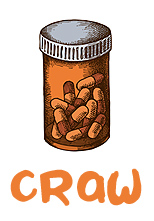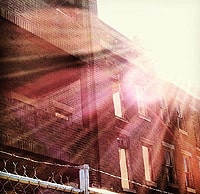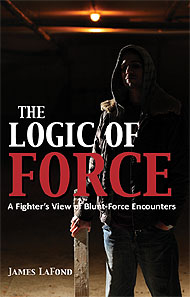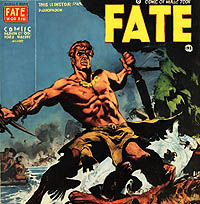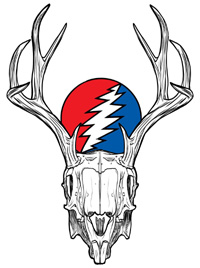Letters and Illustrations Edited by Peter Matthiessen
Catlin lived 1796 thru 1872 worked as a painter of tribal peoples and their environments from 1831 through 1867.
Two days ago, just before walking to the used book store, I took a call from a young Texan, whose family is related by marriage to the Comanche. He was curious about any more findings in this area of paleface Indians. I quipped that anyone who denies paleface Indians, has not been to a Powwow. The next day, I found this book.
Catlin has much to say of this obliquely. His portraits are only of leading persons of the tribes. He does not generally name the mixed-race persons who he illustrates as such, it seeming taboo even then, with hateful whites and romantic whites both seeming to want to believe in a pure alien race being displaced by them. He avoids naming Anglo-Indians but will name Spanish Indians. The true evidence though, is in his art.
As a member of the academic establishment, he was bound by the 1840s to go along with the Exclusive Bering Land Bridge Theory and only permitted to note occasional European infusions, namely Welsh and Jewish, the latter which he does not assign a great antiquity, inferring that Jews might have fled to the New World and assimilated with tribes in the time of Columbus, when Jews were being drive out of Spain and forced to convert. Columbus himself was the son of a converso from Italy. Catlin was a good friend of the Mandan Indians, who were genocided by the Lakota during his lifetime. He noted light complexions, green, gray and blue eyes, and provided a list of comparative words in Welsh and Mandan, as well as their legend of an ancestor, a “first man” bringing knowledge of God from the east.
I first conducted a survey of the small portion of Catlin’s work included in this collection. He was on the scene as recently defeated tribes were driven across the Mississippi in defeat, to suffer from disease and be preyed upon by the most powerful western tribes, while the weaker western tribes, many having few men left, banded together with the refugees.
General Survey of Illustrations
Western Tribes
28 persons, by name
15 pure-blooded with strong Asiatic features
13 mixed-race in appearance
0 European in appearance
The trend above was west to east, with the tribes from the Pacific to the Rockies showing no European characteristics, but those in the plains showing increasing evidence of interbreeding.
Eastern Tribes
These tribes were a combination of recent immigrants from east of the Mississippi and tribes located on the west side of the Mississippi, such as the Mandan, who maintained a history of having eastern ancestors or of being driven to the banks of the Lower Missouri and Upper Mississippi by stronger northern plains tribes.
9 persons by name or station, wives typically unnamed “slaves”
0 pure-blooded/Asiatic
1 mixed race person
8 persons with European features, possibly mixed, but with dominant European faces
Among the pure bloods, the Blackfeet were the most impressive specimens. There was one woman, who I quite liked, whose name was The Thighs. These features were tragically not illustrated.
Catlin names these people as individuals and describes elsewhere the practice of marrying captive women and adopting captive children among the tribes. He was present for hostage exchanges at Indian agencies. He does not name obvious white men as such outside of the case of a murdered chief of the Seminole, suggesting, in light of his vocal affinity for these tribesman as being morally superior to civilized men and being naturally honorable and God-fearing, that he may have been politely protecting some of these men from scrutiny.
Impressions of mixed-race persons
pg 286, Man of Good Sense, Konzas, English?
pg 304, Clermont, Osage, certainly part Negro, [what exactly Clermont means in Osage, is not explained]
pg 305, Clermont’s wife, wavy hair, Scottish?
pg 331, Bow and Quiver, Comanche, wavy hair, Spanish, high caste
pg 333, The Spaniard, Comanche, wavy hair, Spanish peasant stock with huge thighs, the best warrior and horseman who came to prominence after being placed in the most dangerous spot in every battle by his Comanche brothers who attempted to have their enemies kill him off
pg 373, Red Jacket, Senecas, English/Asiatic/African mongrel, quite a thugish looking brute, could be a skinhead leader of the 1980s
pg 400, He Who Drinks the Juice of the Stone, Choctaw, Scottish/African mix with near-fro hair, looks like the quarterback for the Kansas City Chiefs, 20-inch neck, outfitted for lacrosse
pg 453, Cloud, Seminole, stocky, mustached, big workman hands unusual for warriors indicating that he was a true Seminole, the word meaning runaway, Anglo-Asiatic.
Impressions of European Tribal Persons
pg 362, The Foremost Man, Kickapoo, Irish
pg 363, Cock Turkey, Kickapoo, French
pg 366, He Who Stands Alone, Wee-ahs [tribal text note “with intelligent European heads,” Anglo-French
pg 371, Bread, Oneidas, wavy hair, English, what does Bread mean in Iroquois? Oh, it means Bread?
pg 376, The Thinker, Iroquois, wavy hair, tanned high caste Anglo-French if I ever I saw one
pg 390, The Open Door, Shawnee, mustached brother of Tecumseh looks, like a Scotsman
pg 441, The Running Fox, Sacs and Foxes, nephew of Black Hawk, Anglo-American, looks like actor Tom Hardy with bull neck, most masculine of the chiefs
pg 451, Black Drink AKA Powell, Seminole, “white” father and Cree mother, looks so white that his mother must have been Irish, as his father was probably Scottish, as they ran the southeastern frontier, wavy hair, Irish face
Epilogue
To finish this brief survey, I should quote Catlin from among 497 pages of letters and entries he wrote. It is doctrine to dismiss the impressions of any “white” on the subject of the tribes. But in that period, when most tribes battled their neighbors even to extinction, investigators such as Catlin, met and befriended more tribesmen from a wider range of tribes and regions, than any tribesman could, in light of the barriers of tribal animosity. Catlin saw entire tribes wiped out by smallpox as he toured, and two tribes wiped out by war.
“Their rights invaded, their morals corrupted, their lands wrested from them, their customs changed, and therefore lost to the world; and they at last sunk into the earth, and the ploughshare turning the sod over their graves, and I have flown to their rescue—not of their lives or of their race (for they are doomed and must perish), but to rescue their looks and their modes, at which the acquisitive world may hurl its poison and every beam of destruction, and trample them down and crush them to death; yet phoenix-like, they may rise from the stain on a painter’s palette, and live again upon canvas…”
Thank you George Catlin.


